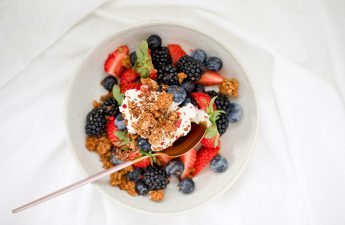
Last week we had a nutrition presentation for staff here at TOPS Headquarters. A lot of great information was shared and employees had the opportunity to think about nutrition in a different way. One of the topics touched on was organic foods. According to the United States Department of Agriculture, organic agriculture uses methods that preserve the environment and avoid most synthetic materials, such as pesticides and antibiotics. One possible drawback of organic food is that it tends to come with a higher price tag. But this doesn’t mean that you have to watch your grocery bill skyrocket or choose all organic foods all of the time. To help you decide when it might be worth it to shell out extra cash for organic fruits and veggies, below are two lists assembled by the Environmental Working Group (EWG)*. The EWG’s Dirty Dozen™ list includes produce with the highest pesticide levels while their Clean Fifteen™ list includes produce least likely to hold pesticide residues.
Dirty Dozen™
- Apples
- Peaches
- Nectarines
- Strawberries
- Grapes
- Celery
- Spinach
- Sweet bell peppers
- Cucumbers
- Cherry tomatoes
- Snap peas
- Potatoes
Clean Fifteen™
- Avocados
- Sweet corn
- Pineapples
- Cabbage
- Sweet peas (frozen)
- Onions
- Asparagus
- Mangos
- Papayas
- Kiwi
- Eggplant
- Grapefruit
- Cantaloupe
- Cauliflower
- Sweet potatoes
Something else to check out: Don’t miss these 3 tips to manage emotional eating.
*Learn more about the Environmental Working Group’s findings at https://www.ewg.org/foodnews/index.php


